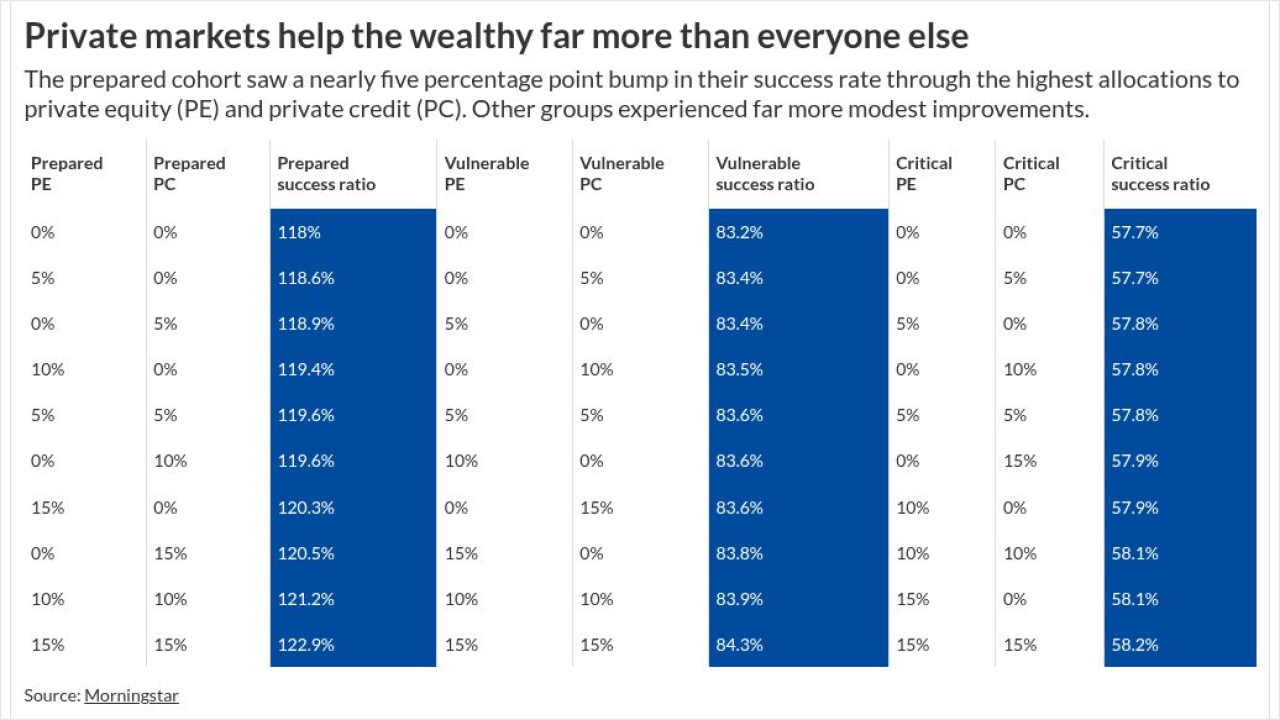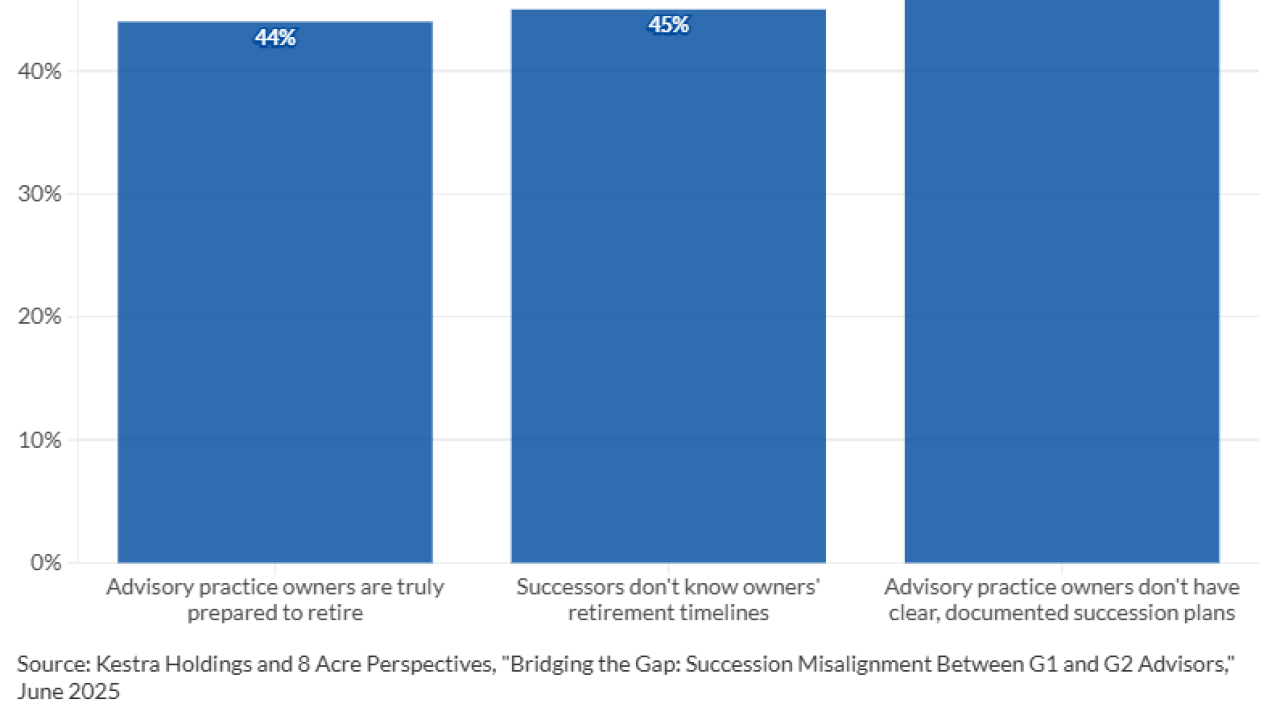This was before my time, but they tell me that cold calling was once a very effective marketing strategy — until, of course, it wasn’t. I remember when advisory firms routinely attracted dozens and sometimes hundreds of prospects to cheesy prepackaged seminars, until attendance gradually began to slip away.
Now I’m hearing that the most recent marketing innovation, client appreciation events where clients are invited to bring along their friends, is starting to lose its effectiveness, either because clients are no longer bringing their friends, or because their guests are too far outside the advisory firm’s target market.

Marketing trends come in and go out with the inevitability of sunrise and sunset. The question is: what’s next on the marketing horizon? How will advisory firms reach beyond referrals to attract the next wave of clients?
To find out, I talked with three marketing experts who work with financial planning firms: Kristin Luke of Kaleido in San Diego, Megan Carpenter of FiComm Partners in Los Angeles, and Lauren Hong of Out & About Communications in Pacific Beach, California.
Marketing today is about finding clients at the moment when they’re experiencing a pain point.
Luke says that marketing today is about finding clients at the moment when they’re experiencing a pain point — either money in motion like an inheritance or a settlement, or a life event like a career change, divorce or imminent retirement.
“If you’ve identified what those pain points are,” she says, “[you can] focus on really targeted campaigns using online channels.”
Carpenter recommends that you start by defining your target audience, and then craft a message that talks directly to that audience. “If you don’t have those core foundational pieces to your marketing plan, I think you’re going to struggle,” she says.
You can research your niche on a website called
‘FREEMIUM’
Armed with this information, you could create (or have your marketing consultant create) what Luke calls a “freemium:” an e-book or video on, for example, the best ways clients can maximize charitable activities or insights into retirement. Interested parties can download the freemium simply by giving their email address.
The conversations you have with new clients are one good source of content. Hong recommends that you create a Q&A freemium which is regularly updated with answers to questions clients have posed to you over the last few months. “What they ask you is probably on the mind of prospects coming to your site as well,” she says.
Recent research shows how advisers work and how they like to communicate.
To let prospective clients in your target niche know about the freemium, buy advertising on social media sites. “The sites,” Luke says, “let you pinpoint, for example, people who are charitably inclined, living within 25 miles of San Diego with at least $1 million of investable assets over the age of 55, that have shown an interest in charitable endeavors.” She estimates that the cost per click to get someone to your site will fall somewhere between $1 and $2.
The more data you demand before clients get to the download, the less likely they will fill it out.
That doesn’t, of course, guarantee that the prospect will download your freemium. So instead of sending people to your website home page, create a specific landing page for the freemium, Luke recommends. That landing page should have a catchy headline and bullet points that describe what prospects can expect to receive when they download the resource. Ask just for name and email address, since the more data you demand before they get to the download, the less likely that people will fill it out.
That list of interested parties is what Carpenter calls the “mouth of the funnel.” In the middle of the funnel, you want to gradually develop an online relationship with these people, so they trust you enough to call you.
‘SNACKABLE’ CONTENT
Since the prospect is likely experiencing a pain point when he or she downloaded the freemium, the first two months can be crucial; you want to send out additional materials on the subject.
Carpenter recommends “snackable” content; short pieces of information that are easy to read, focusing on different angles of the same core problem.
In addition, says Luke, you want to have a call to action at the bottom: “If you want more information or advice on this issue, please go to our website and schedule an appointment at your convenience.”
Whenever prospects click on an email with a link, you should ask them an additional question, like: “what is your biggest financial concern?” “Get them to interact a little bit on your website before they get to the content,” Carpenter says, “so you can learn more about your prospective client.”
GET ACQUAINTED WITH THE SMART WEB
She adds that the so-called smart web has opened up a lot of opportunities in the middle of the funnel.
“You can tell who is clicking on your emails, and what else they’re looking at on your website,” she says. “You can tell where they go when they leave. This prospect keeps clicking on the market commentaries. Another person bounces off the marketing commentaries and lingers on the retirement planning articles.” The next time they go back to the page, the website is going to recognize their IP address and send them into a preferred content funnel, so they continue to get content on their subjects of interest.

Carpenter says that her adviser clients have been surprised to discover that prospects and clients aren’t as fascinated by their market commentaries as they thought. “Advisers are spending most of their time writing about investments,” she says, “but we’re finding that case studies and pieces that talk about client situations and solutions are outperforming their market commentaries by a good margin.”
Adviser clients have been surprised to discover that prospects and clients aren’t as fascinated by their market commentaries as they thought.
Hong says that even after they’ve downloaded the freemium and other content, prospects won’t call until they’ve checked out your website with a critical eye. Carpenter estimates, based on a variety of studies, that you have anywhere from six to nine seconds to make an impression. If you don’t, the prospect will leave and might never come back.
The solution? Hong recommends that instead of a site that talks about your years in the business, find a way to communicate the benefits you provide to clients — in the language and idiom of your target niche. If you do talk about yourself, share personal details. “One of the first places prospects will go is your bio, and I think you have to be vulnerable there,” she says. “It helps them establish a relationship with a human being, not just a professional.”
Carpenter says that personalization is the new differentiator. An advisory firm she works with now creates personalized video performance statements, which start with, “Bob, we’re going to talk a little bit about how the markets performed in the last quarter, and what we’re looking for ahead in the market. We want to start by talking specifically about how your portfolio has performed.”
The interesting thing, Carpenter says, is that this firm didn’t have to record a thousand videos to make this happen. “They were able to use technology to overlay each client’s actual account balance onto the video,” she explains, “so there was only one video, with different intros.”
This is just a quick look at the new high-tech marketing reality that the planning profession is going to have to learn to navigate. As always, the early adopters will reap the most benefits. Those who come late to the table risk arriving just as targeted ads on social media, freemiums and snackable content have become as ineffective as cold calling is today.






